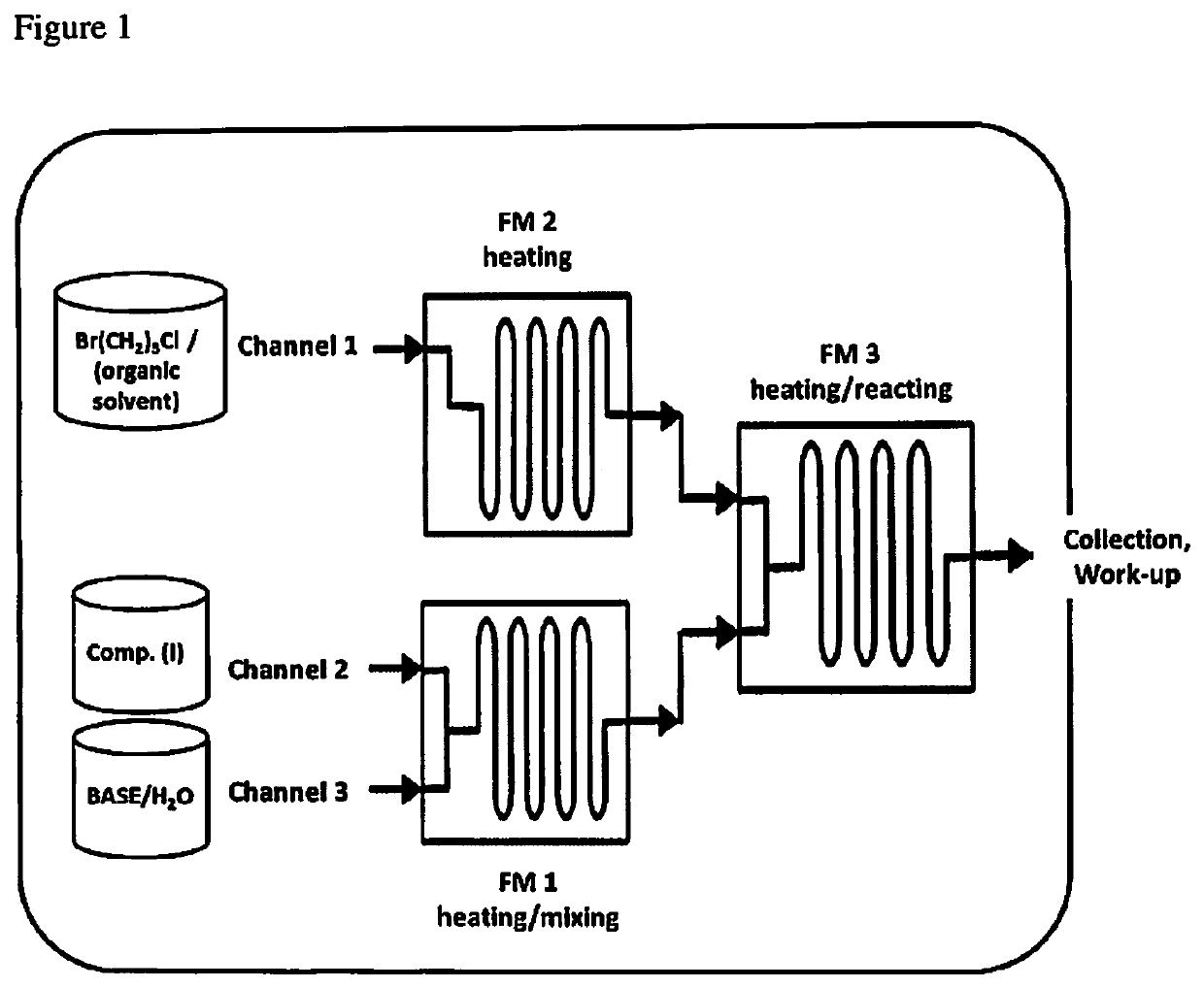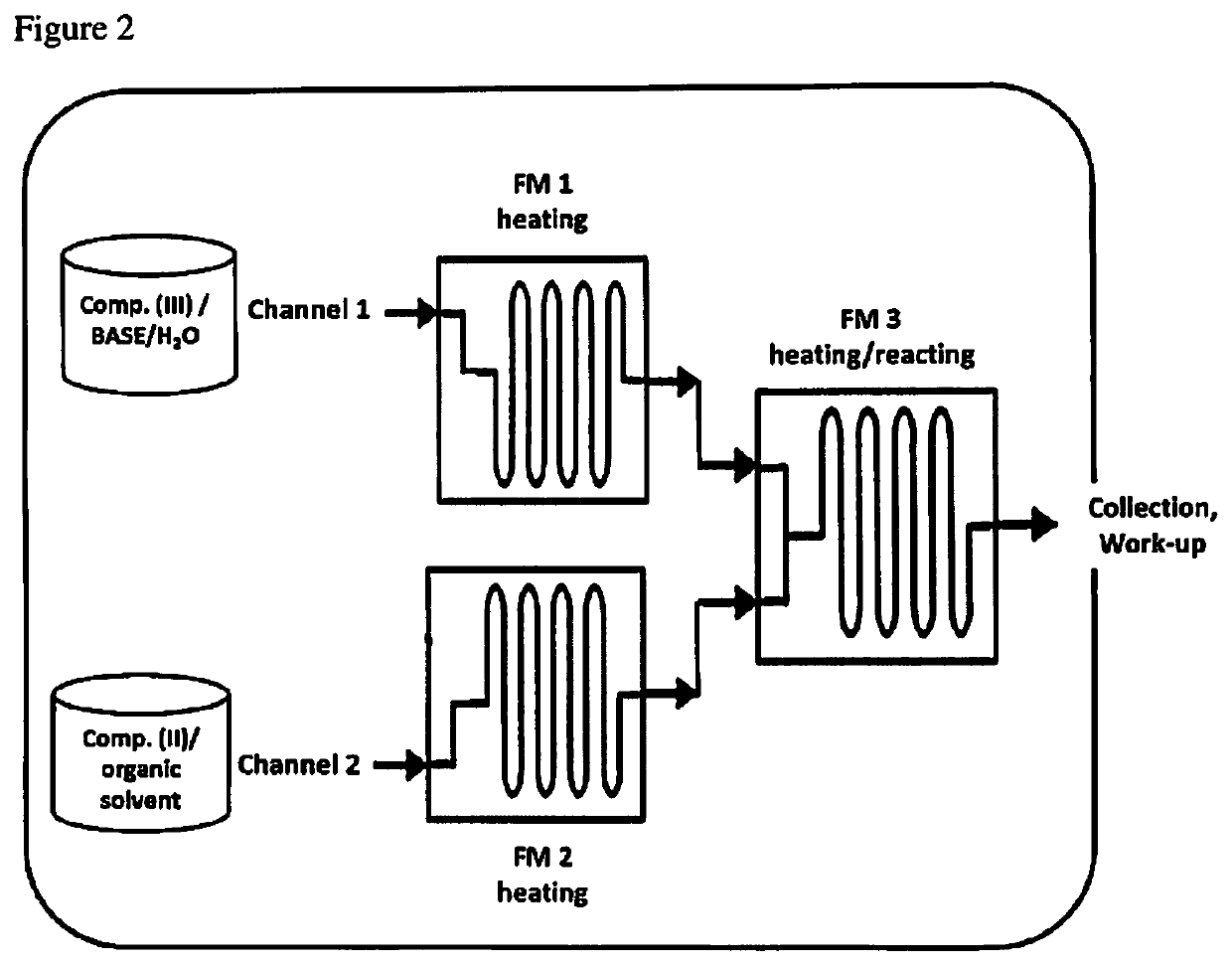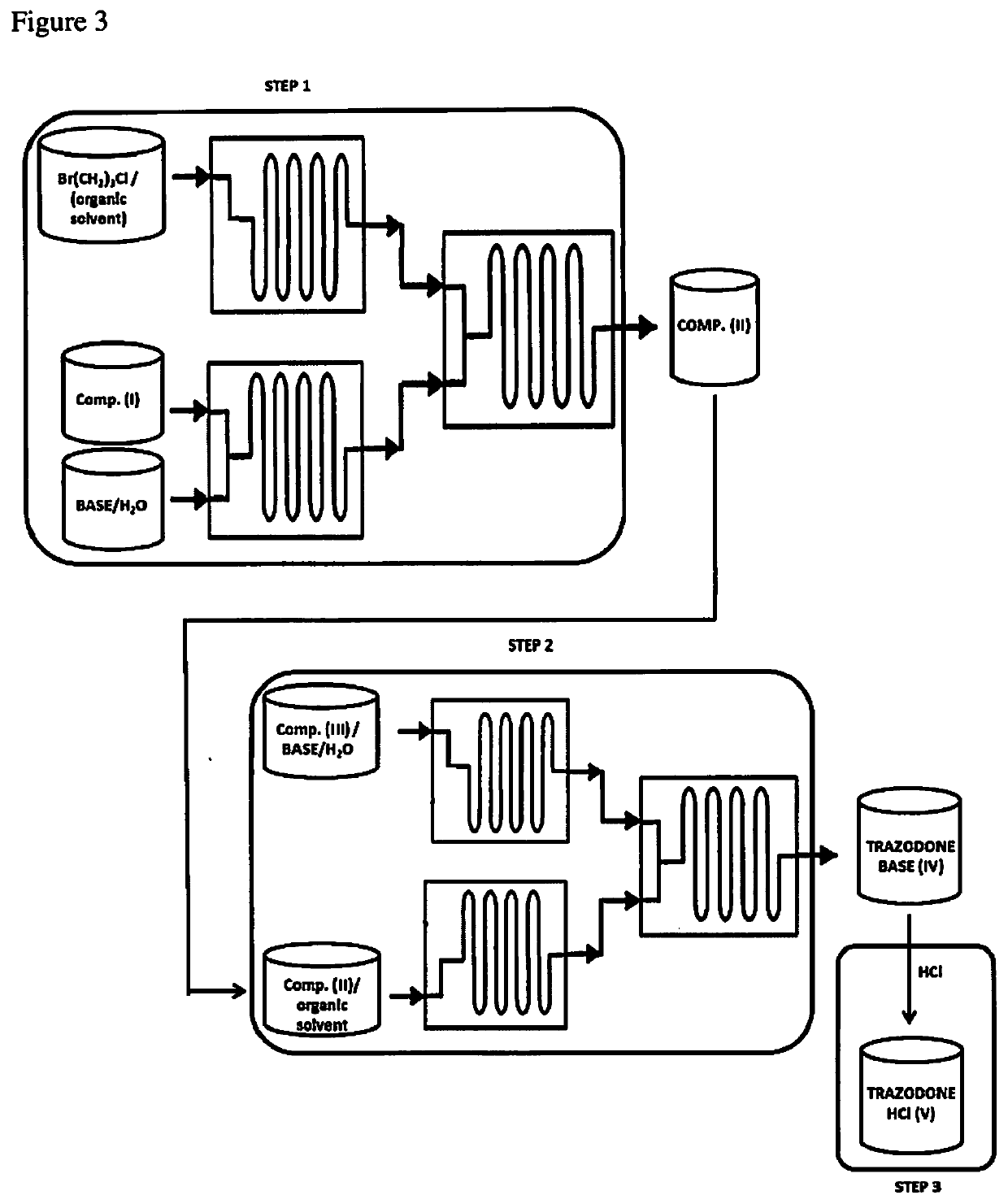Continuous process for the preparation of trazodone
a technology of trazodone and continuous process, which is applied in the direction of liquid-liquid reaction process, organic chemistry, drug compositions, etc., can solve the problems of long reaction time (hours) and high amount of toxic reagents to be handled, and achieve high yield and purity, high yield and purity
- Summary
- Abstract
- Description
- Claims
- Application Information
AI Technical Summary
Benefits of technology
Problems solved by technology
Method used
Image
Examples
example 1-3
[0149]The procedure reported in the general description of step 1 was used to perform reactions using different alkaline aqueous solutions. The reactor used was a Corning's Advanced-Flow™ Reactor (AFR) G1, equipped with six fluidic modules (9 ml internal volume each), two pre-heating modules and a quenching fluidic module.
[0150]Table 1 below shows the reaction conditions used and the results obtained.
TABLE 1Purity ofMaincompoundby-Sam-TTimeBaseConc.YieldIIaproductple(° C.)(s)(eq.)NaOH(%)(%)(%)19573NaOH (1.1)1.7M6896.829586NaOH (1)1.7M7094.6TEAb (0.11)39473TEAb (1.1)—6596.3aas measured by HPLC;bTEA: triethylamine
[0151]Table 1 shows that all the tested conditions allowed to obtain yields higher than or equal to 65% with a purity above 94%.
example 4-6
[0152]The procedure reported in the general description of step 1 was used to perform reactions at different average temperatures (Table 2). All the reactions were run using a 1.7 M solution of NaOH (1.1 equivalents with respect to m-chlorophenylpiperazine (I)). The reactor used was a Corning's Advanced-Flow™ Reactor (AFR) G1, equipped with six fluidic modules (9 ml internal volume each), two pre-heating modules and a quenching fluidic module.
TABLE 2Purity ofMainTTimeYieldcompound IIaby-productaSample(° C.)(s)(%)(%)(%)477109429851071129790>5612110910083>5ameasured by HPLC
[0153]It appears clearly from the results summarized in the above Table 2 that increasing the temperature led to an increase in yields, but to higher amounts of main by-product and to a decrease in purity.
examples 7-9
[0154]The procedure reported in the general description of step 1 was used to perform reactions where the concentration of the base in the aqueous solution was increased to 9.5 M and the % of NMP varied (Table 3). The reactor used was a Corning's Advanced-Flow™ Reactor (AFR) G1, equipped with six fluidic modules (9 ml internal volume each), two pre-heating modules and a quenching fluidic module.
[0155]The reactions were run using a 9.5 M solution of NaOH (1.1 equivalents with respect to m-chlorophenylpiperazine (I)).
TABLE 3Purity ofMainTTimeNMPYieldcompound IIbby-productbSample(° C.)(s)(%)(%)(%)(%)78167108494.788860158495.298860208695.5bas measured by HPLC
[0156]The results summarized in Table 3 show that in all cases it was possible to obtain compound (II) with yields equal to or higher than 84% and a purity of about 95%.
[0157]General Description of Step 2:
[0158]Compound (II) and s-triazolo-[4,3-a]-pyridin-3-one (III) were continuously reacted in a flow reactor as schematically repre...
PUM
| Property | Measurement | Unit |
|---|---|---|
| temperature | aaaaa | aaaaa |
| temperature | aaaaa | aaaaa |
| temperature | aaaaa | aaaaa |
Abstract
Description
Claims
Application Information
 Login to View More
Login to View More - R&D
- Intellectual Property
- Life Sciences
- Materials
- Tech Scout
- Unparalleled Data Quality
- Higher Quality Content
- 60% Fewer Hallucinations
Browse by: Latest US Patents, China's latest patents, Technical Efficacy Thesaurus, Application Domain, Technology Topic, Popular Technical Reports.
© 2025 PatSnap. All rights reserved.Legal|Privacy policy|Modern Slavery Act Transparency Statement|Sitemap|About US| Contact US: help@patsnap.com



